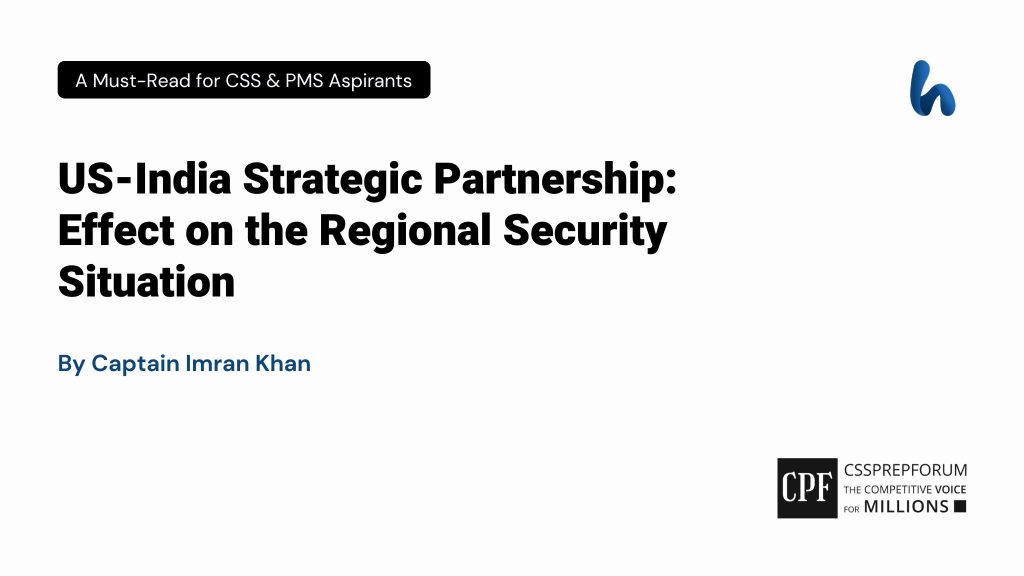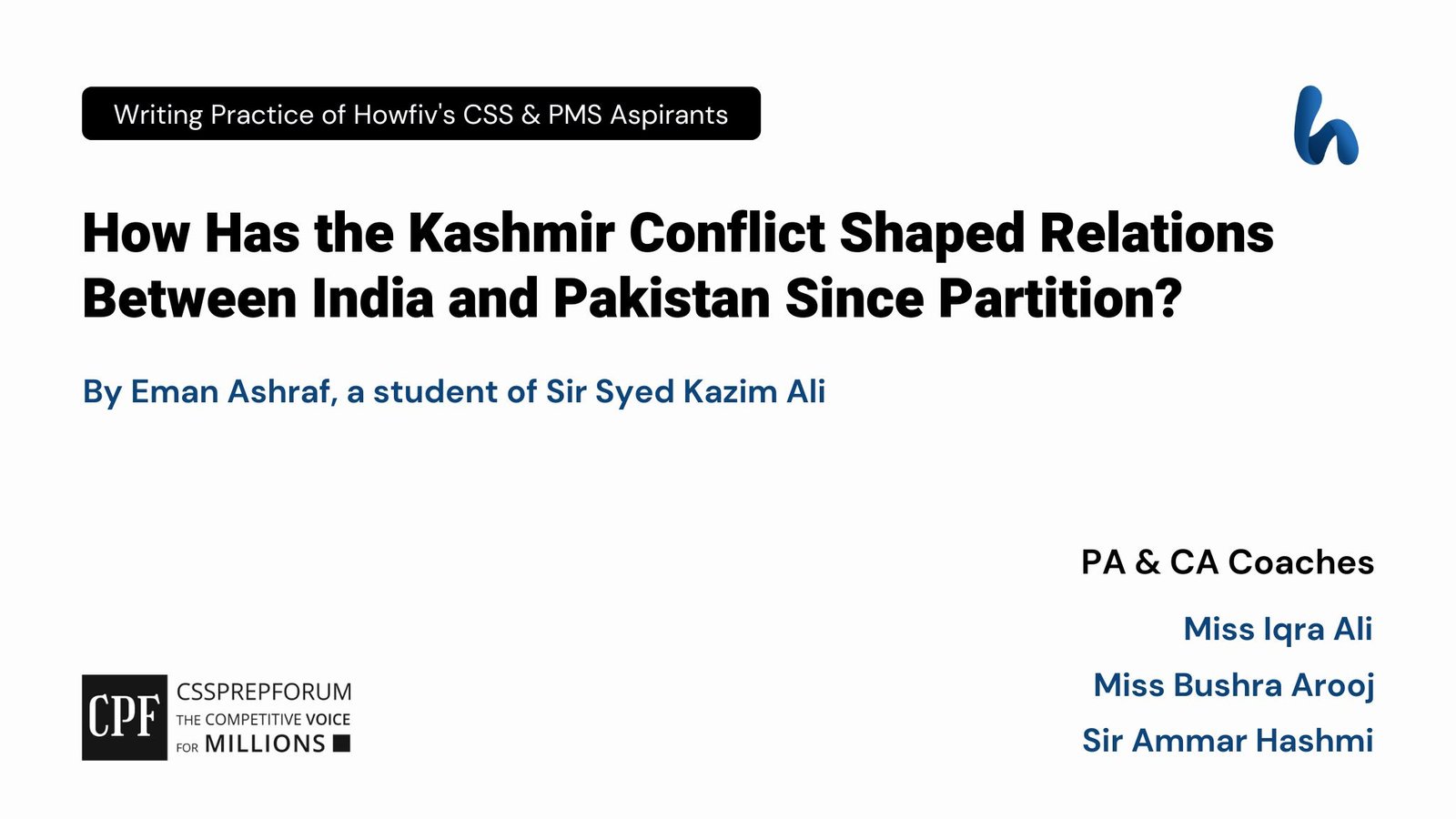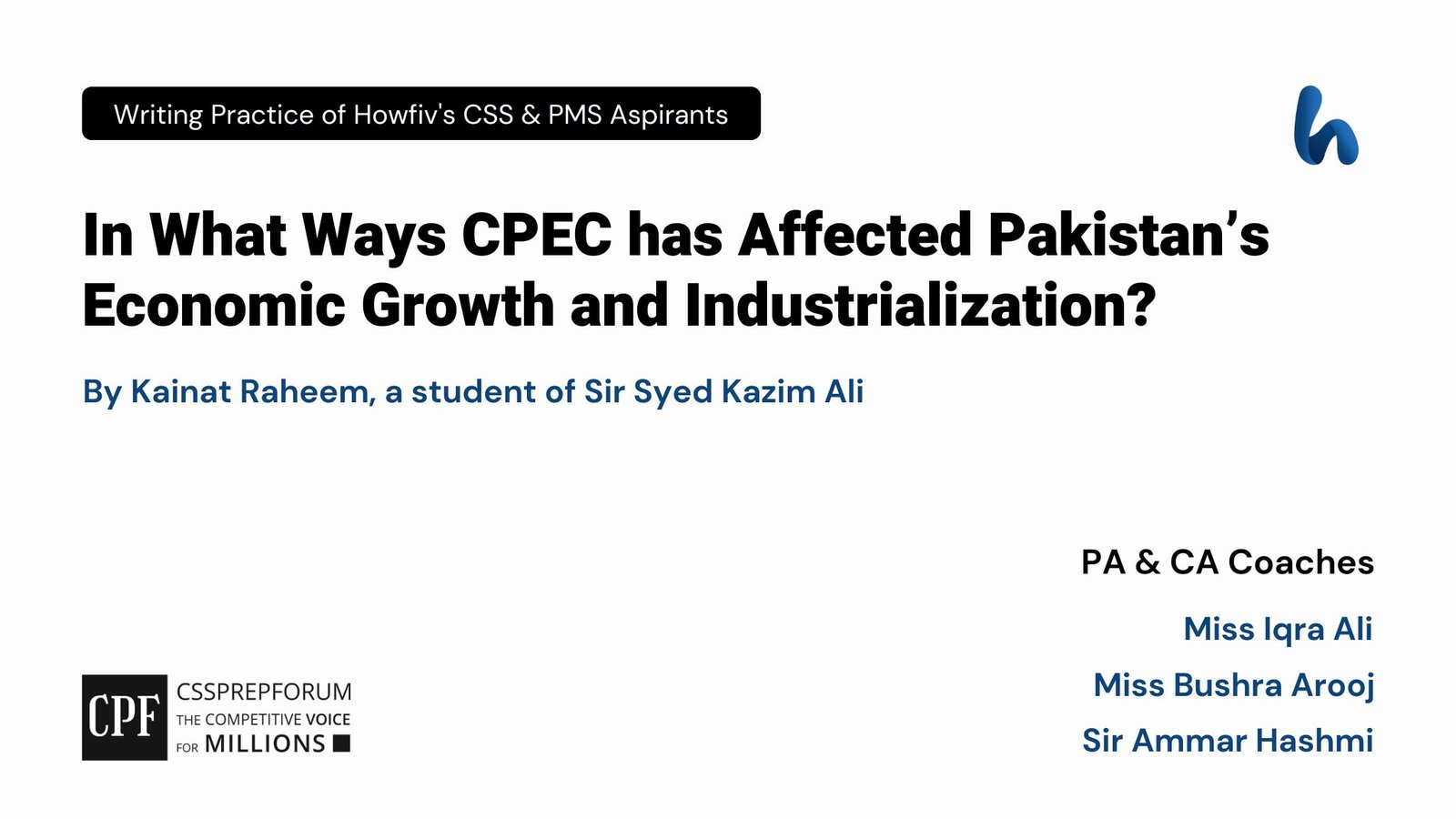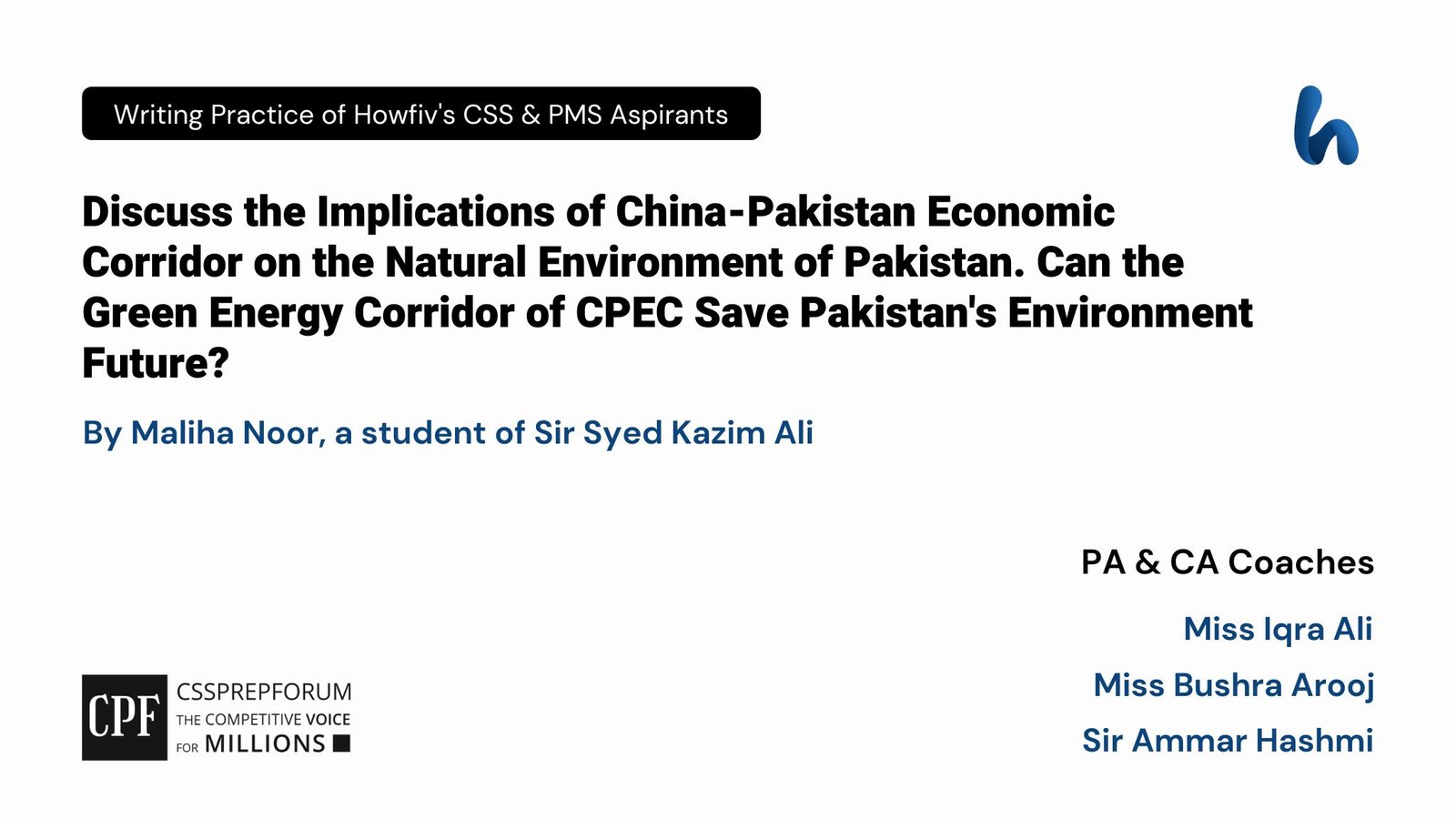Effect of US-India Partnership on Regional Security | Daily Writeup | Opinions
The article is written by Captain Imran Khan, a student of Sir Syed Kazim Ali.

Outline
1-Introduction
The inconsistent relations of India with the strategic giant America have been blooming since the Cold War came to an end, putting the region’s security at stake as opportunistic India lies in ambush to create its hegemony and disturb the regional balance, of course, with the United States at its six o’clock.
2-A Bird’s Eye View of the US-India Strategic Relations Over the Years
- ✓The Early Five Decades of Inconsistency
- ✓The Post-Cold War Upsurge in Relations
3-What Are the Impacts of the US-India Growing Relations on Regional Security?
- ✓A Growing Indian Hegemony in the Region
- ✓The Indian Backing of the United States in the latter’s Asia-Pacific Region Cold War
- ✓Increased military capabilities of India causing power imbalance
- ✓A Possible US-China Face-off with India’s Help under BECA
4-How Could the Region Cope with the Threat Posed by the Expanding US-India Ties?
- ✓To Resolve Conflicts through Diplomacy
- ✓To Promote National Integration in the Concerned Countries
- ✓To Adopt a Policy of Non-Alignment
5-Critical Analysis
6-Conclusion

Answer to the Question
The Asia-Pacific region has great geostrategic importance for every country looking to increase its hold on the global arena. Thus, America also aims to control the very region for the country’s progress and prosperity. Along these lines, it has been quick to recognise the pre-partitioned India back in 1946, marking the beginning of estranged relations between the two. Both countries have seen ups and downs in their ties over the years but are currently witnessing a time of stability. This stability, however, has been acting to destabilize other countries in the region. For instance, India is on the lookout for every opportunity to establish its hegemony; it backs the US in the latter’s affairs, and it is receiving the support of the superpower against the rising giant China. Nevertheless, if the Asia-Pacific countries hold strongly policies of diplomacy, non-alignment, and national integration, the US-India goal to overpower this part of the world could be countered.
No country’s foreign policy could be divorced from its internal and external environment. Likewise, the United States of America (USA) and India have also been compelled at the hands of their internal security shortfalls and external threats, thus, seeking good relations with each other. Initially, America was quick to recognize India as the latter’s colonial years came to an end. However, India was not of great importance to the US at the time, for the superpower was busy in the cold war. So, the relations were, more or less, developed on an ad-hoc basis. A former diplomat and US Ambassador Daniel Kux has referred to US-India in the early decades of their relationship as:
“estranged democracies whose relationship has been occasionally friendly, sometimes hostile, and more often than not estranged”
Fast forward to the end of the cold war, the US-India relations started to get aligned and stabilized. Numerous treaties and pacts have been signed since, marking the continuous upsurge in the graph of India-US ties, which continues to date.
As the US-India relations grow and strengthen over time, the two countries aim to maintain and, even, increase their power in the region. For instance, India has been trying to grow its hegemony in the Asia-Pacific region by destabilizing Pakistan by equating the Kashmir situation to that of Global Terrorism. In this way, the neighboring country is eventually targeting instability in South Asia. Likewise, India is also backing the United States of America in the latter’s cold war in the region; the US critically needs India to counter China’s increasing influence in this part of the world as the growing economy grips it with the Belt and Road Initiative. Thus, global security is at stake as a power imbalance is instigated in Asia.
Not only this, the US War in Afghanistan has served as a watershed moment for opportunistic India, helping it increase its military capabilities by backing America in its stance. This way, even after the official exit of American forces from Afghan soil, India holds a strong position among the polity of nations, especially its neighbors, threatening border skirmishes. Moreover, America, scared of the communist growth of China, has signed a Basic Exchange and Cooperation Agreement (BECA) with India in 2020. Under its shadow, America can technically counter China’s rise as a global power by compelling a face-off between India and China. It would, undoubtedly, hamper the regional security perspectives, further fueling the fire of the already existing Sino-Indian conflict. So, the US-India growing cooperation is putting at risk the security of the Indian Ocean Region.
“We consider the USA a valued partner in our flagship programmes.” – Indian Prime Minister Modi
In light of the aforementioned critical security concerns posed by the growing US-India ties, there is a dire need for the region to cope with the threats. For that matter, the South Asian countries must look forward to diplomacy in resolving a conflict whenever it arises. Sorting out disputes through talks and not hard power is the only way countries can keep themselves away from the hazards they are pre-disposed to. Next to it, unstable nations that are on the American radar, like Iraq, Afghanistan, and other Middle Eastern states, should work hard to promote sentiments of national integration internally. A strong sense of nationality and brotherhood can invalidate any attempts of intervention by foreign actors. Last but not least, the countries most at threat need to stay out of the way of the powerful nations. They should adopt and stick to a strict policy of non-alignment and non-intervention when it comes to international disputes. In short, Asian countries need to embrace sagacious and pragmatic measures to ensure regional security and stability.
In a robust analysis of the security dilemma posed by India-US relations, it can be claimed that undoubtedly, India’s growing power is a factor of concern; however, its rise to a level that would be enough to counter China is unlikely. India, likewise, would never go for a face-off with a giant like China that already possesses the upper hand, for the latter has been slowly and steadily capturing India’s border territory over the years. Nevertheless, the tense Sino-Indian situation is bound to increase Pak-China friendship, eventually bringing strategic balance in the Indian Ocean region to counter any possible American intervention.
In a world of complex threats, our security and leadership depend on all elements of our power, including strong and principled diplomacy. – Barack Obama
In a nutshell, India and America have long been working on their mutual relations via signing several cooperation agreements, of which the BECA is one. The two countries are in an ad-hoc relationship because both need each other – one to maintain regional hegemony and the other to counter China’s global rise to power. Their mutualism, however, has put regional security at stake, and the already politically unstable sovereignties of Asian countries are at high risk of being hampered. However, provided the crucial geo-political importance of the region, if the countries lying in it take pragmatic and sagacious steps to keep themselves at bay from international disputes, it is unlikely for US-India ties to overpower them in any way.

CSS Solved Past Papers’ Essays
Looking for the last ten years of CSS and PMS Solved Essays and want to know how Sir Kazim’s students write and score the highest marks in the essays’ papers? Then, click on the CSS Solved Essays to start reading them.
CSS Solved Essays
CSS Solved General Science & Ability Past Papers
Want to read the last ten years’ General Science & Ability Solved Past Papers to learn how to attempt them and to score high? Let’s click on the link below to read them all freely. All past papers have been solved by Miss Iqra Ali & Dr Nishat Baloch, Pakistan’s top CSS GSA coach having the highest score of their students. General Science & Ability Solved Past Papers












